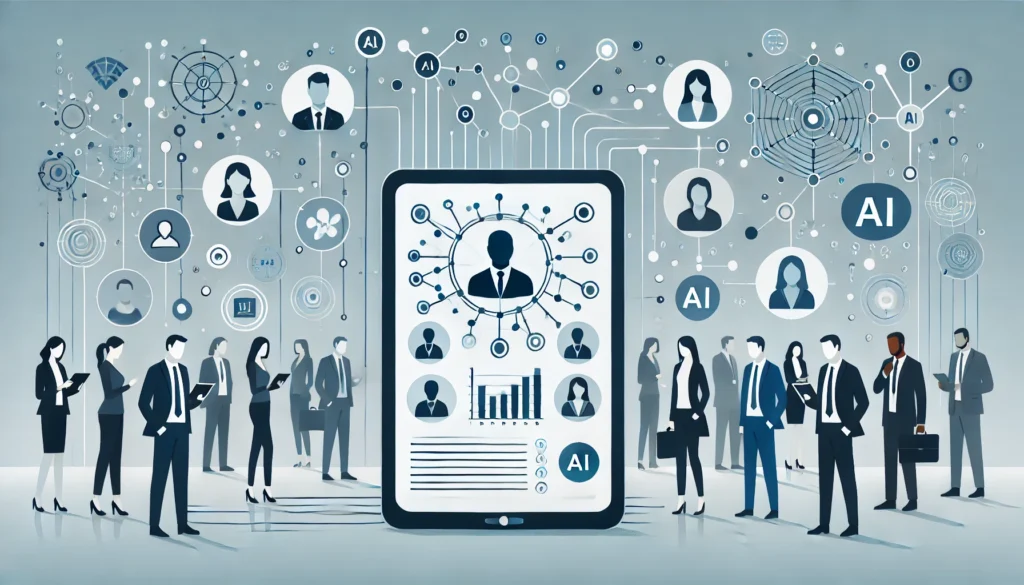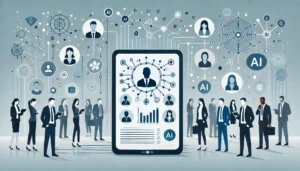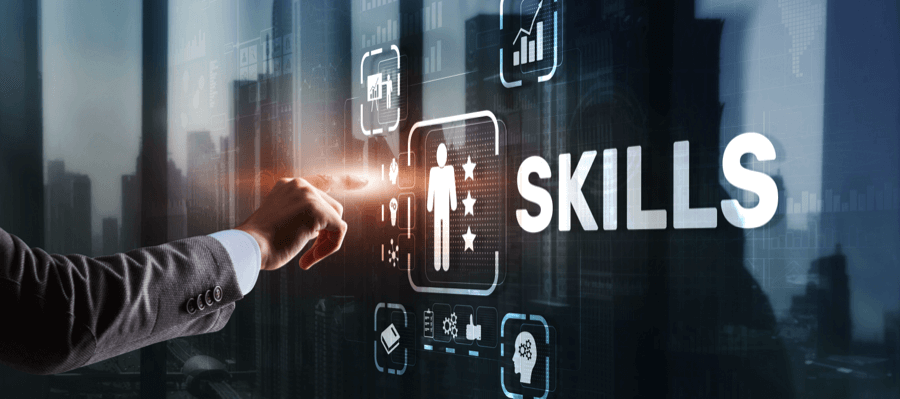The use of AI in recruitment provides organizations with an effective means of enhancing the recruitment process and its results. However, to fully harness the potential of AI recruitment bots and other recruitment tools, it is crucial to have a clear understanding of how they perform. Proper KPIs can help not only evaluate the effectiveness of AI tools but also improve the recruitment process and its outcomes.
The following is a list of six key performance indicators that can help understand the effectiveness of AI-based recruitment. From conversion rates and time-to-hire to diversity metrics and cost-per-hire, these KPIs provide meaningful information to help organizations make informed decisions. Besides, we discuss how to measure the performance of AI, how to prevent its misuse, and how to enhance the recruitment process further.
Key Performance Indicators for Measuring AI Recruitment Success
By leveraging key performance indicators (KPIs), organizations can assess the impact of AI recruitment bots and refine strategies for optimal results. Below are six critical KPIs that provide a comprehensive framework for evaluating AI recruitment success.
Conversion Rates
Conversion rates show the percentage of candidates who progress through each stage of the funnel, thus reflecting AI’s ability to identify suitable candidates. For instance, an AI recruitment bot could screen applicants, and the conversion rate could be the number of people invited for an interview.
Analyzing conversion rates by each stage of the application process, interview, offer, and hire, can help identify gaps in the AI-based approach. If the conversion rate from interview to hire is less than anticipated, then it may imply that the AI is picking candidates who appear to be qualified on the paper but in reality, they do not fit into the company culture or the particular position.
Thus, by comparing these rates, the companies can fine-tune AI algorithms to identify suitable candidates at each stage.
Assessing Time-to-Hire Reductions
Time-to-hire refers to the time taken to fill a position and is an important measure of recruitment effectiveness. AI recruitment bots speed up the hiring process by reviewing resumes, communicating with candidates, and scheduling and conducting interviews with candidates. To measure the effect of AI, companies should track the time taken to hire before and after AI applications.
Comparisons with conventional approaches are important. According to a LinkedIn study, the time to hire in most industries ranges between 30-45 days. By automating some of the processes, AI can help minimize this by half or even more, thus shortening the hiring cycle. By tracking this KPI frequently, organizations can quantify the improvements in AI productivity and spot opportunities for enhancement.
Defining and Measuring Quality of Hire
Quality of hire is a crucial KPI, as it directly impacts the long-term success of AI-driven recruitment. This metric evaluates how well new hires perform in their roles, reflecting the effectiveness of the AI recruitment process.
Quality of hire can be assessed through post-hire metrics such as employee performance, turnover rates, and adherence to company culture. For example, performance appraisals and feedback from supervisors can be used to determine how well the AI-selected candidates are performing on the job. When these metrics are linked to the AI screening process, companies can fine-tune the AI models to focus on the attributes that result in better employees.
Try PreScreen AI for Free
Don’t miss out on the opportunity to experience all the benefits of AI-powered interviews firsthand – try our free trial today.
Evaluating AI’s Impact on Candidate Experience
Candidate experience is an important metric that measures how applicants view the recruitment process and can greatly impact the employer brand. Properly implemented AI recruitment bots can improve this process by providing timely information, clear guidelines, and a smooth application process.
Organizations can use metrics such as response time, feedback, and satisfaction rate to assess candidate experience. For instance, AI can cut down the time it takes to reply to a candidate’s queries from days to minutes thus enhancing the candidate experience. Talent Board noted that positive candidates are 38% more likely to accept a job while 29% more likely to refer a friend.
This way, companies can monitor candidate experience and determine the areas of improvement within the AI-based recruitment process to make the technology a positive addition to the hiring process.
Diversity and Inclusion Metrics
AI recruitment bots can increase diversity as they do not have biases that are inherent in human beings. However, it is equally important to assess the extent to which these strategies are effective in achieving D&I objectives.
Measures include the share of diverse talent, the share of diverse new hires, and the share of underrepresented talent at each step of the hiring process. For instance, McKinsey revealed that organizations with ethnic and cultural diversity in the top quartile of their executive teams are 33% more likely to be the industry leaders in terms of profit.
Through tracking these metrics and performing routine assessments of AI algorithms, organizations can guarantee that their AI technologies are positively impacting the diversification of the workforce and are fair and clear.
Analyzing Cost-Per-Hire
Cost-per-hire is a crucial metric that captures the financial efficiency of the recruitment process. AI recruitment bots can help cut down hiring expenses by eliminating time-consuming tasks and processes.
To assess the ROI of AI, the costs of AI-based recruitment should be compared to the costs of conventional recruitment. The Society for Human Resource Management (SHRM) estimates that the cost per hire is around $4,129. By identifying the need for external recruiters, decreasing the time taken to hire new employees, and lessening the burden on the HR teams, AI can decrease this cost.
Using the cost-per-hire metric, organizations can compare the cost of hiring before and after the integration of AI recruitment bots to determine the ROI of AI and justify further spending on AI technologies.
Try PreScreen AI for Free
Don’t miss out on the opportunity to experience all the benefits of AI-powered interviews firsthand – try our free trial today.
Tools and Techniques for Monitoring AI Effectiveness
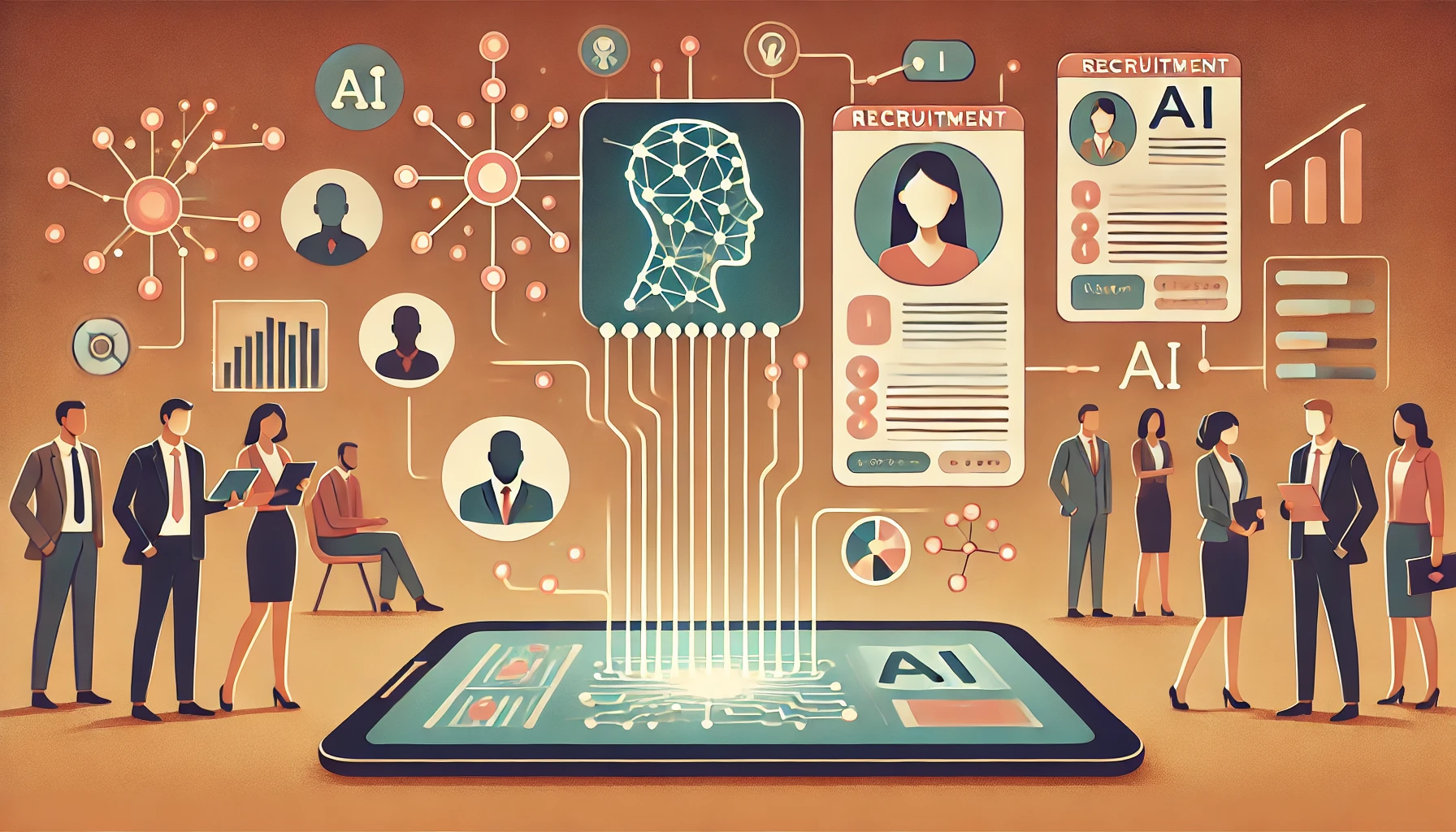
It is crucial to assess the performance of AI recruitment bots to guarantee that they are accomplishing the intended objectives. With the right tools and techniques, organizations can monitor AI performance in real time and find ways to optimize it and meet ethical guidelines. This section provides an overview of the different methods and strategies that can be used to monitor AI recruitment.
AI Performance Dashboards
AI performance dashboards provide a single, real-time view of recruitment KPIs such as conversion rates, time to hire, and candidate engagement. These dashboards offer graphical interfaces in the form of charts, graphs, and heat maps through which HR professionals can easily determine the efficiency of the AI recruitment bots.
A good dashboard should have configurable modules and should be updated periodically. For instance, a funnel chart may depict the percentage of candidates moving through each stage of the hiring process, while a line graph displays the time-to-hire trend.
Understanding these visualizations is crucial when it comes to decision-making based on data. A sharp decline in conversion rates at a particular stage may indicate a problem with the AI’s screening parameters. By tracking these metrics, organizations can easily identify any issues that may be affecting the performance of the AI recruitment bots and make the necessary adjustments to keep them in line with the organization’s hiring objectives.
Analytics and Reporting Tools
Some of the analytics platforms that can be used to integrate with AI recruitment systems include Google Analytics, Tableau, and Microsoft Power BI. These tools assist organizations in processing big data, identifying patterns, and generating specific reports on the use of AI in recruitment.
One of the biggest benefits is the capability to create automatic reports and notifications. For instance, HR departments can set up a weekly dashboard with data on candidate diversity, time to hire, and quality of hire. Notifications can inform recruiters about threshold violations, for instance, a sharp increase in candidates’ abandonment.
Automated reporting not only makes the process faster but also provides information to the recruitment teams about the performance of the AI system and when to interfere.
A/B Testing in AI Recruitment
A/B testing is a great way to assess the efficiency of different approaches to the use of AI in recruitment. This is a technique where two similar AI recruitment processes are conducted at the same time with one using a new AI model or feature (Version A) and the other using the conventional method (Version B) to compare the outcomes. Research has demonstrated that iteratively applying A/B testing can result in substantial gains in AI recruitment.
Candidate Feedback Mechanisms
To assess the success of AI recruitment bots, it is crucial to collect feedback from the candidates. Feedback can be gathered using surveys from platforms like SurveyMonkey, and Qualtrics, or even through self-developed feedback forms to capture the candidate’s experience with AI in areas like usability, communication, and satisfaction.
Analyzing the feedback from the candidates gives a clear understanding of how the AI tools are viewed by the users. Thus, by analyzing and responding to feedback, organizations can increase the efficiency of their AI-based recruitment tools and increase the satisfaction of candidates.
AI Audit Tools
AI audit tools are used to ensure that the AI-based recruitment processes are ethical, legal, and in line with company policies. These tools can monitor different aspects of AI systems such as the decision-making process of an algorithm, data management, and bias identification.
One of the biggest issues with AI recruitment bots is that they may contain biases which can lead to unequal hiring. AI audit tools can assist in detecting these biases by analyzing recruitment results and comparing them with diversity and inclusion targets.
Try PreScreen AI for Free
Don’t miss out on the opportunity to experience all the benefits of AI-powered interviews firsthand – try our free trial today.
Using Data to Refine and Improve AI Recruitment Strategies
Data is the foundation of using AI in recruitment. Thus, with the help of data, organizations can fine-tune and enhance their AI-based approaches to recruitment and achieve a closer match between recruitment objectives and hiring results.
Data-Driven Decision Making
Performance data is an essential source of information about the effectiveness of AI algorithms. The patterns of previous hires, candidates, and recruitment results can help determine where the AI models require improvement. For instance, if records show that some candidates tend to excel in certain positions, then AI systems can be programmed to search for similar candidates in the future.
Continuous Learning and AI Model Updates
AI recruitment tools should adapt to new data and trends in recruitment. The system is kept current through continuous learning, where the AI models are fed with new data regularly. If the AI models are not updated frequently, they may not be effective in making the right hiring decisions.
Personalization and Candidate Matching
This is where the use of AI in the recruitment process comes in handy in matching the right candidate to a particular position. Through the use of data on candidate preferences, previous applications, and recruiter requirements, AI can provide better job suggestions and matching.
Applying Predictive Analytics
Predictive analytics involves the use of past data to determine future trends and requirements for hiring. Thus, based on previous recruitment data, organizations can identify which positions may become important in the foreseeable future and begin the recruitment process for these positions.
AI systems can also employ predictive analytics to determine how likely a candidate is to succeed based on past performance. For instance, if a certain category of candidate has performed well in a specific position, the AI can recommend candidates of the same type in the future.
Try PreScreen AI for Free
Don’t miss out on the opportunity to experience all the benefits of AI-powered interviews firsthand – try our free trial today.
Key Aspects for Successful Implementation of AI in Recruiting
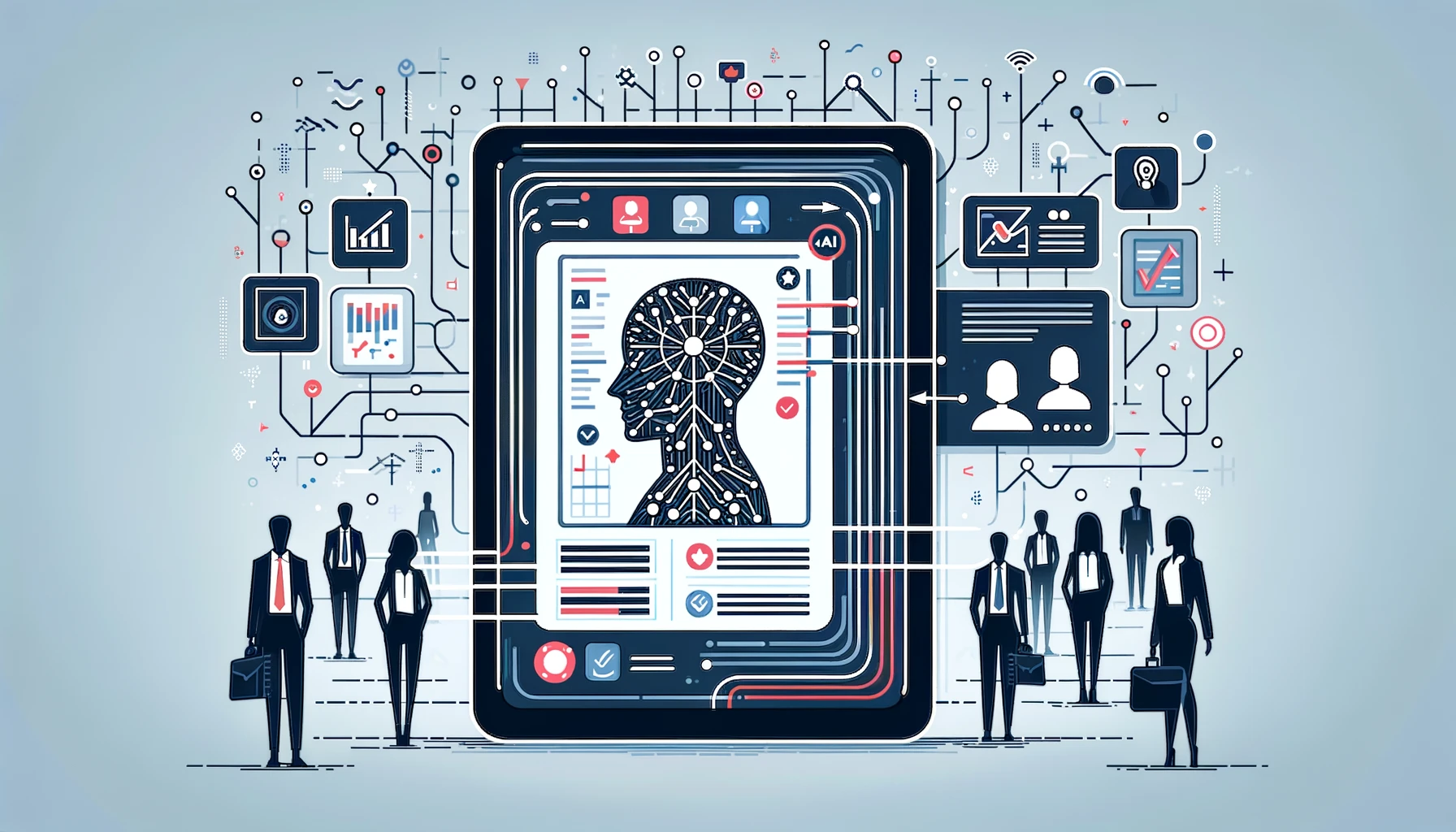
Implementing AI in recruiting requires careful planning and collaboration to ensure its success. Here are key aspects to consider:
Work with the IT Department
It is crucial to involve IT in the process of integrating AI into the organization. The IT department ensures that AI tools are correctly integrated, protected, and sustainable within the organization’s technological framework.
Protect Ethical Aspects and Confidentiality
AI in recruiting must follow ethical principles, especially on issues of data protection and candidates’ information. Adopting stringent measures in data protection and ensuring that the company complies with the GDPR is important for keeping the trust of clients.
Ensure Process Transparency
It is crucial to ensure that the processes of AI in recruitment are transparent to prevent the occurrence of biases. Explaining how AI is applied in the hiring process can increase candidate’s trust and make all the parties involved familiar with the system.
Encourage and Motivate the Team
Implementation of AI can be difficult for the HR department. Training the team, encouraging them to be open to change, and explaining the advantages of AI can help the team and make them feel comfortable during the change process.
Thus, organizations can effectively adopt AI in recruiting, increasing productivity while ensuring that ethical concerns and morale are not compromised.
Try PreScreen AI for Free
Don’t miss out on the opportunity to experience all the benefits of AI-powered interviews firsthand – try our free trial today.
Final Thoughts
It is crucial to evaluate the effectiveness of AI in recruitment to fully harness its potential and this can be done through the use of KPIs. Conversion rates show how well AI is moving candidates through the funnel, and time-to-hire shows the improvements that AI brings. This way, it is possible to identify the problem areas and make adjustments so that the process of recruitment is efficient and swift.
The quality of hire is a critical metric because it shows the efficiency of AI in recruitment in the long run. In this way, organizations can use post-hire performance measures to fine-tune the AI to focus on applicants with positive outcomes. Likewise, candidate experience metrics help to ensure that AI contributes to a positive impact on the overall candidate experience and thus on the employer branding.
D&I metrics are important to ensure that the application of AI in the workplace enhances the inclusion of minorities. Thus, AI can help companies achieve D&I objectives while ensuring fairness by tracking the portrayal of underrepresented groups and performing periodic assessments.
Last but not least, cost per hire is a metric that shows the effectiveness of AI in recruiting. When comparing the costs associated with the use of AI to the costs of conventional approaches, it is possible to justify the further development of AI technologies.
Through these KPIs and adherence to ethical best practices in AI, companies can achieve their hiring goals and enhance the efficiency, effectiveness, and overall quality of their workforce.
Related Articles
From Ads to Hires – The Impact of AI on Recruitment Marketing
Perception management is central to employer branding since it determines how potential candidates view a given organization...
Automated Talent Sourcing Strategies That Work in 2024
In the current world of increased competition for talent, the use of automated talent sourcing techniques has...
Go from Good to Great at Using AI to Pre-Qualify Candidates
One of the biggest challenges for hiring managers and recruiters is finding the right candidates. You have...
